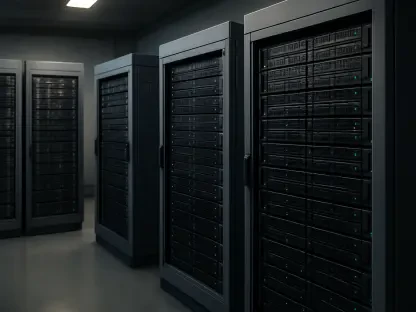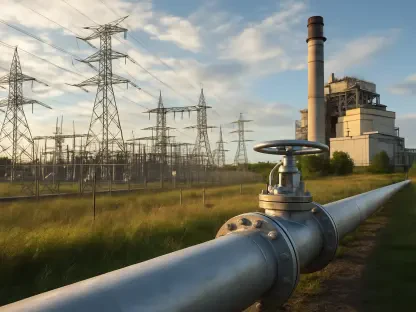The electric grid stands as the backbone of modern society, powering homes, businesses, and critical infrastructure across America, yet it faces relentless challenges from environmental stressors, mechanical wear, and evolving energy demands with over 160,000 miles of high-voltage transmission lines and countless more in distribution networks. How can utilities ensure reliability when conductors—the very lifelines of power delivery—are under constant threat from soil shifts, thermal cycling, and fault events? This guide aims to equip utility professionals, engineers, and stakeholders with actionable insights into enhancing grid resilience through conductor strength. By focusing on innovative solutions like Copper-Clad Steel (CCS) conductors, this comprehensive resource will help achieve a more durable, secure, and efficient electric grid capable of withstanding modern pressures.
The purpose of this guide is to underscore the critical importance of conductor strength in maintaining grid integrity amidst growing complexities. As infrastructure expands into remote terrains and integrates renewable energy sources, the demands on grounding systems have intensified, making mechanical durability as vital as electrical performance. This resource provides a clear path to understanding why stronger conductors are non-negotiable and how they can prevent costly failures, reduce maintenance, and bolster safety.
Beyond identifying the problem, this guide offers a practical framework for adopting advanced materials that address both current and emerging challenges. It delves into the benefits of CCS conductors, highlighting their role in building a resilient grid while navigating issues like theft and manufacturing quality. Readers will gain a deeper appreciation for how strategic material choices can safeguard power delivery and ensure long-term stability in an ever-changing energy landscape.
Unveiling the Power of Conductor Strength in Modern Grids
Conductor strength serves as a cornerstone of grid reliability, ensuring that the vast network of power lines and grounding systems can endure the rigors of environmental and mechanical stress. With utilities grappling with harsher conditions—ranging from extreme weather to soil movement—the role of durable conductors has never been more pivotal. These components must maintain consistent performance to prevent outages, equipment damage, and safety hazards that could disrupt entire communities.
The focus here lies on grounding conductors, which are increasingly tested by modern grid demands such as expanded infrastructure and renewable integration. Unlike simpler systems of decades past, today’s grids require materials that can handle dynamic stressors while delivering reliable electrical performance. Innovations like Copper-Clad Steel (CCS) offer a promising solution, blending mechanical toughness with conductivity to meet these dual needs.
This guide sets the stage for a detailed exploration of how conductor strength directly impacts grid resilience. By examining evolving challenges and cutting-edge materials, it aims to provide utilities with the knowledge needed to make informed decisions. The journey through historical context, technical advancements, and practical applications will reveal why prioritizing durability is essential for sustaining power delivery and public trust.
The Evolution of Grid Demands: Why Conductor Strength Matters Now
Utility infrastructure has undergone a profound transformation over recent decades, shifting from localized, stable systems to sprawling grids that span diverse and often challenging environments. Early conductors were designed for shorter, predictable paths with minimal exposure to dynamic forces. Today, however, the integration of remote transmission lines and underground systems exposes these components to unprecedented levels of stress, necessitating a reevaluation of material choices.
Modern grids must contend with a host of stressors, including increased grounding paths, thermal cycling from fluctuating loads, and fault events that test conductor limits. Soil movement and vibrations further compound the issue, particularly in areas with unstable terrain or heavy equipment activity. These conditions demand conductors that can resist deformation and maintain tight connections over decades of service life without succumbing to wear.
The consequences of conductor failure are both costly and far-reaching, impacting more than just operational budgets. Higher ground resistance, equipment faults, and vulnerability to surges or lightning strikes can lead to prolonged outages and safety risks. Such failures often require extensive repairs and replacements, straining resources and eroding confidence in the grid’s reliability, which makes the case for prioritizing strength in design undeniable.
Building Resilience: The Role of Copper-Clad Steel Conductors
Step 1: Understanding CCS Design and Durability
Copper-Clad Steel (CCS) conductors represent a significant advancement in grid technology, merging the electrical conductivity of copper with the tensile strength of steel through a specialized metallurgical bonding process. This unique combination allows CCS to resist stretching, breakage, and deformation under intense mechanical stress, offering a robust alternative to traditional materials. Utilities adopting this solution can expect enhanced longevity in grounding systems, even in the most demanding conditions.
Strength Under Stress: Resisting Mechanical Challenges
When compared to softer copper alternatives, CCS conductors excel in withstanding physical stressors such as soil shifts, vibrations, and the impact of heavy machinery. Pure copper tends to elongate or fracture over time when subjected to repeated movement, compromising ground contact. In contrast, the steel core in CCS provides exceptional resistance, ensuring stability in substations and along transmission corridors prone to environmental disturbances.
Thermal and Fault Resilience: Ensuring Electrical Integrity
Beyond mechanical durability, CCS conductors demonstrate remarkable resilience against thermal cycling and fault currents that often degrade lesser materials. Fluctuating temperatures and sudden electrical surges can weaken connections or cause material fatigue, but CCS maintains its integrity under these pressures. This capability ensures consistent performance during high-stress events like lightning strikes, protecting critical infrastructure from damage.
Step 2: Enhancing Grid Security with Theft Deterrence
Economic and security considerations also play a vital role in the adoption of CCS conductors, particularly in areas vulnerable to theft. Unlike pure copper, which holds high scrap value and attracts vandals, the steel core in CCS significantly reduces its appeal to thieves. This characteristic makes it a practical choice for safeguarding substations, renewable energy sites, and remote installations where monitoring is challenging.
Minimizing Losses: A Practical Defense Against Vandalism
Theft of grounding wire and other components results in substantial financial losses for utilities, often requiring costly replacements and repairs. By utilizing CCS, the incentive for such criminal activity diminishes, as the material’s lower resale value deters potential vandals. This proactive measure not only cuts expenses but also enhances overall grid security by maintaining system integrity in high-risk locations.
Step 3: The Importance of Manufacturing Quality
Not all CCS conductors deliver the same level of performance, as manufacturing quality directly influences their long-term reliability. The precision of the copper-to-steel bonding process determines whether the conductor can endure decades of exposure to harsh conditions. Utilities must prioritize sourcing from reputable manufacturers to avoid the pitfalls of substandard products that fail prematurely.
Bonding Precision: The Key to Longevity
High-quality bonding, as seen in products from trusted names like Copperweld, ensures uniform and inseparable cladding that resists moisture and corrosion. This meticulous craftsmanship prevents separation or degradation, even under constant vibration or environmental exposure. Such durability translates into fewer maintenance interventions and a more dependable grounding system over time.
Avoiding Premature Failure: Why Expertise Matters
Subpar bonding in CCS conductors can lead to significant performance issues, including reduced conductivity and structural weakness. Without expert manufacturing, the risk of early failure increases, potentially causing ground faults or safety hazards. Selecting suppliers with proven expertise in bimetal production is essential to guarantee that conductors meet the rigorous demands of modern grid applications.
Key Takeaways: Strengthening Grids with CCS Conductors
- Conductor strength remains a fundamental pillar of grid reliability, especially as environmental and mechanical challenges intensify.
- CCS conductors deliver unmatched durability by blending copper’s conductivity with steel’s tensile strength for superior performance.
- Key advantages include resistance to stress, fault currents, and theft, which collectively lower maintenance and security expenses.
- Manufacturing quality, particularly precise bonding, plays a critical role in ensuring long-term effectiveness and safety.
- Choosing durable materials like CCS is vital for achieving sustained grid stability and protecting public infrastructure.
Future Horizons: Conductor Strength in an Evolving Energy Landscape
The power sector continues to evolve with a strong emphasis on infrastructure hardening and the integration of distributed energy resources. Conductor strength aligns seamlessly with these trends, providing a foundation for grids that must withstand extreme weather events and support expanding renewable deployments. As utilities plan for resilience over the next several years, materials like CCS offer a strategic advantage in meeting these ambitious goals.
Emerging challenges, such as adapting to climate-driven weather patterns and accommodating decentralized energy systems, highlight the ongoing need for robust conductors. Innovations in material science may soon introduce even more advanced options, further enhancing mechanical and electrical performance. Staying ahead of these developments requires a commitment to balancing durability with conductivity in every aspect of grid design.
CCS conductors position utilities for success by addressing both current stressors and future uncertainties. Their proven ability to endure harsh conditions while maintaining efficiency makes them a cornerstone of forward-thinking infrastructure planning. As the energy landscape shifts, prioritizing such materials ensures that grids remain adaptable and reliable for generations to come.
Final Charge: Building a Resilient Grid for Tomorrow
Looking back, the exploration of conductor strength revealed a clear path to enhancing grid reliability through deliberate material choices. Each step, from understanding the evolution of grid demands to adopting Copper-Clad Steel conductors, underscored the importance of durability in overcoming mechanical and environmental challenges. The focus on manufacturing quality and security benefits further cemented the value of this approach in safeguarding power delivery.
Moving forward, utilities are encouraged to take actionable steps by partnering with trusted manufacturers to ensure the highest standards in conductor production. Investing in resilient materials like CCS proves to be a proactive measure that not only addresses immediate concerns but also prepares systems for emerging threats. This commitment to quality lays the groundwork for safer, more efficient grids.
As a next consideration, stakeholders are urged to advocate for broader adoption of advanced conductors across all levels of infrastructure planning. Exploring potential collaborations with material innovators could unlock new solutions tailored to specific regional needs. By championing durability, the industry takes significant strides toward building a grid that inspires confidence and powers progress for the long term.









